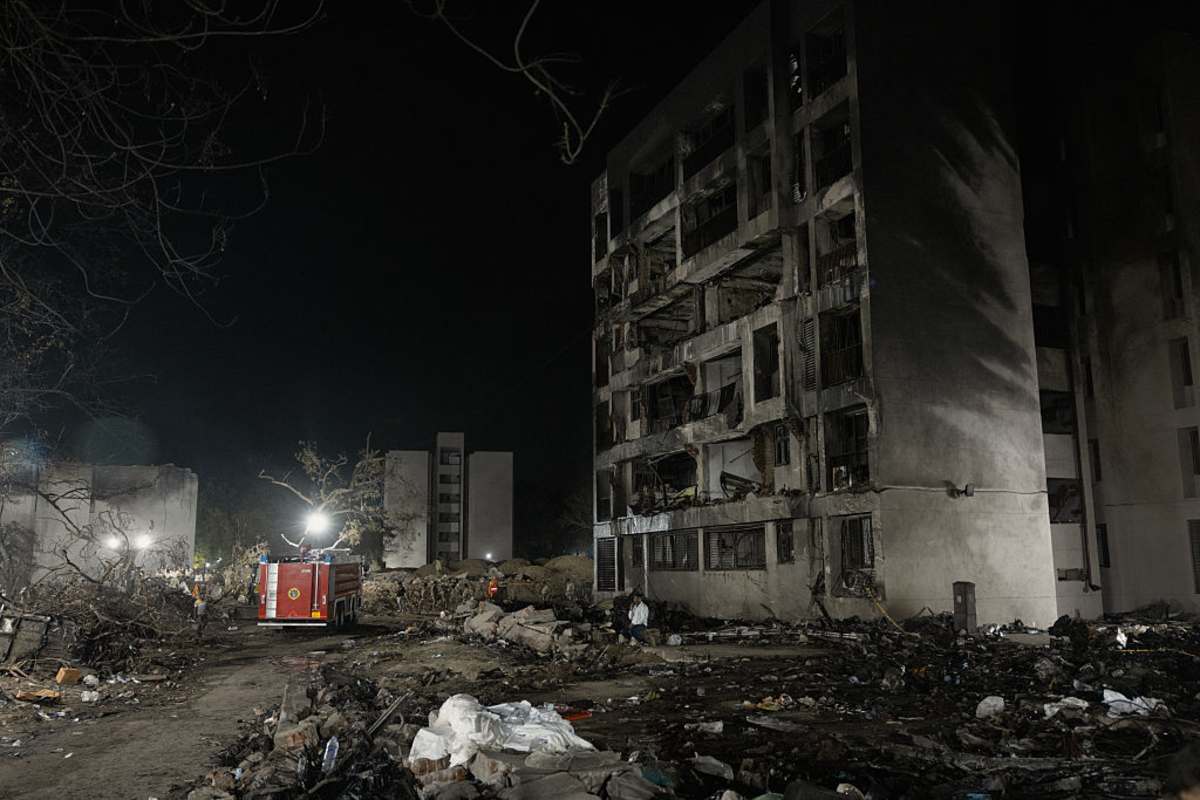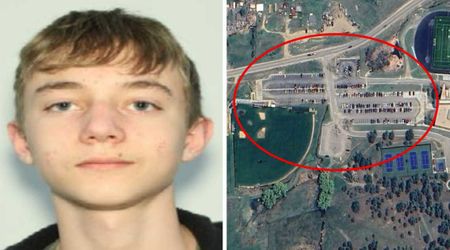'Why did you cut off?': Cockpit audio deepens mystery of Air India crash, pilot error suspected

Air India crashed after taking off. The plane was seen struggling to gain altitude before crashing into a fire ball.. Over 200 people were on board..#AirIndiaCrash pic.twitter.com/xacH20AlSe
— Sudhir Byaruhanga (@Sudhirntv) June 12, 2025
AHMEDABAD, INDIA: As investigators probe the deadly crash of Air India Flight 171, which killed 260 people in June, new cockpit audio is raising suspicions of pilot error.
Just seconds after takeoff, both fuel control switches on the Boeing 787 were inexplicably moved to the "cut-off" position, cutting engine power. The aircraft plunged into a residential area in Ahmedabad within 40 seconds.
The cockpit recording captured a tense exchange between the pilots, with neither taking responsibility for the critical action. Experts are now questioning how the safety-locked switches could have been disengaged, despite being designed to prevent accidental activation.

What is the purpose of an aircraft’s level lock fuel control switches?
The ongoing investigation, led by Indian authorities alongside experts from Boeing, General Electric, Air India, and regulators from the US and UK, has raised serious questions about what happened in the cockpit of Air India Flight 171.
At the center of the inquiry are the aircraft’s lever-lock fuel control switches, which are engineered to prevent accidental shutdowns. Designed with built-in locking mechanisms dating back to the 1950s, the switches must be pulled upward to unlock before they can be moved. They're also protected by guard brackets to avoid unintended bumps.
What did experts say about pulling the 'cut-off' switches?

A Canada-based aviation investigator, speaking on condition of anonymity, told the BBC, “It would be almost impossible to pull both switches with a single movement of one hand, and this makes accidental deployment unlikely.”
Shawn Pruchnicki, a former airline accident investigator and aviation expert at Ohio State University, echoed the concern. If a pilot did move the switches, whether intentionally or by mistake, it "does beg the question: why... pull the switches to the off position. Was it intentional, or the result of confusion?” he said.
He added, “That seems unlikely, as the pilots reported nothing unusual. In many cockpit emergencies, pilots may press the wrong buttons or make incorrect selections — but there was no indication of such a situation here, nor any discussion suggesting that the fuel switches were selected by mistake. This kind of error doesn't typically happen without some evident issue.”

“What does this [bit in the report] exactly mean? Does it mean that with a single flip, that switch could shut the engine off and cut the fuel supply? When the locking feature is disengaged, what exactly happens? Could the switch just flip itself to off and shut down the engine? If that's the case, it's a really serious issue. If not, that also needs to be explained,” Pruchnicki wondered.
Peter Goelz, former managing director of the US National Transportation Safety Board (NTSB), called the findings “very disturbing.” He emphasized, "There's likely much more on the cockpit voice recorder than what's been shared. A lone remark like 'why did you cut off the switches' isn't enough."
Goelz added, "The new details suggest someone in the cockpit shut those valves. The question is, who, and why? Both switches were turned off and then restarted within seconds. The voice recorder will reveal more: was the flying pilot trying to restart the engines, or the monitoring one?"
Goelz concluded by saying, "They haven't identified the voices yet, which is crucial. Typically, when the voice recorder is reviewed, people familiar with the pilots are present to help match voices. As of now, we still don't know which pilot turned the switches off and back on."
Former investigator raises a technical concern about the Air India crash
🚨🇮🇳#BREAKING | NEWS ⚠️
— Todd Paron🇺🇸🇬🇷🎧👽 (@tparon) June 12, 2025
Plane crash, an Air India Boeing 797-8 Dream liner flight number #AI171 crashed right after takeoff in Ahmedabad killing 241 people there was one survivor.
The plane was traveling from
Ahmedabad to London you can see on the radar from flight radar 24.… pic.twitter.com/x2feTCWguk
Captain Kishore Chinta, a former investigator with India’s Aircraft Accident Investigation Bureau (AAIB), raised a critical technical concern
Chinta reported, “Can the fuel cut-off switches be triggered electronically by the plane's electronic control unit without movement by the pilot? If the fuel cut-off switches tripped electronically, then it's a cause for concern."
Meanwhile, a current Boeing 787 pilot weighed in on why the aircraft’s landing gear may not have been retracted during takeoff.
“Every time I take off in a 787, I notice the landing gear retraction process closely. By the time the gear handle is pulled, we're already at about 200ft (60.9m), and the entire gear retraction process completes by around 400ft – roughly eight seconds in total, thanks to the aircraft's high-pressure hydraulic system," they stated.
According to the pilot, the crew likely had no time to follow standard procedures once both engines failed.
“When both engines fail and the aircraft starts going down, the reaction goes beyond just being startled — you go numb. In that moment, landing gear isn't your focus. Your mind is on one thing: the flight path. Where can I put this aircraft down safely? And in this case, there simply wasn't enough altitude to work with," the pilot noted.










